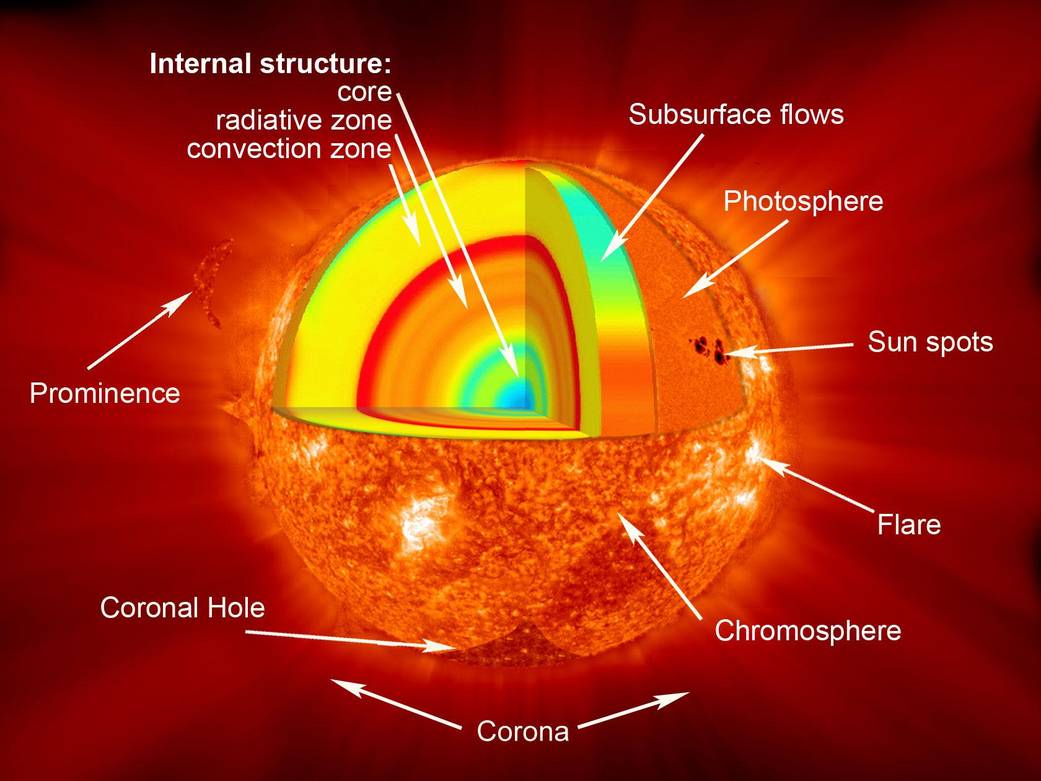The sun and its atmosphere consist of several zones or layers. From the inside out, the solar interior consists of:
- the Core (the central region where nuclear reactions consume hydrogen to form helium. These reactions release the energy that ultimately leaves the surface as visible light. ),
- the Radiative Zone (extends outward from the outer edge of the core to base of the convection zone, characterized by the method of energy transport – radiation),
- and the Convection Zone (the outer-most layer of the solar interior extending from a depth of about 200,000 km to the visible surface where its motion is seen as granules and supergranules. ).
The solar atmosphere is made up of:
- the Photosphere (the visible surface of the Sun),
- the Chromosphere (an irregular layer above the photosphere where the temperature rises from 6000°C to about 20,000°C),
- a Transition Region (a thin and very irregular layer of the Sun’s atmosphere that separates the hot corona from the much cooler chromosphere),
- and the Corona (the Sun’s outer atmosphere.).
- Beyond the corona is the solar wind, which is actually an outward flow of coronal gas. The sun’s magnetic fields rise through the convection zone and erupt through the photosphere into the chromosphere and corona. The eruptions lead to solar activity, which includes such phenomena as sunspots, flares, prominences, and coronal mass ejections.
Credit: NASA/Goddard






























